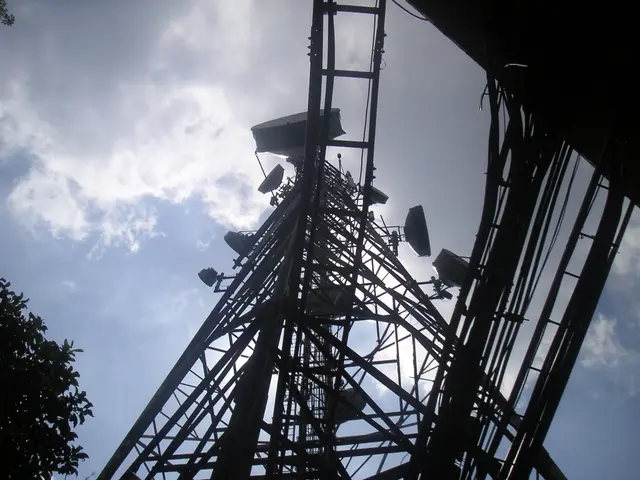Exploring the Cosmos: An Unyielding Journey
New Developments in Cosmic Ventures: Updates from the Celestial Sphere
Embark on a thrilling odyssey through the celestial realm as we delve into the awe-inspiring universe of space exploration. tracing back to the mid-20th century, the indomitable human spirit has driven us to unravel the mysteries hidden within the cosmos. And it all began with the launch of Sputnik 1, heralding the dawn of the space age in 1957 by the Soviet Union.
This audacious venture not only fuelled the space race between major powers but also formed the foundation for future missions, pushing the boundaries of our knowledge ever further. From the monumental Apollo moon landings to robotic explorations of distant planets and asteroids, each endeavor contributed invaluably to our understanding of cosmic phenomena and the fundamental laws governing the universe.
Space exploration transcends scientific inquiry; it signifies technological advancement and international alliance. Engineering marvels such as launch vehicles, spacecraft, and ground support systems, developed and refined through space missions, have not only bolstered our space faring capabilities but also significantly impacted everyday technology on Earth. For instance, satellite communication, GPS systems, and innovative materials sciences – the fruits of space-related research – speak volumes about the tangible benefits of our exploratory endeavors.
Cooperation, too, plays a paramount role in modern-day space exploration. More than ever, international partnerships like those between NASA, ESA, Roscosmos, and other space agencies share resources and knowledge to push the frontiers of human understanding. A shining example of such teamwork is the International Space Station (ISS), where astronauts from diverse backgrounds collaborate in a single pursuit of scientific discovery.
We'll delve into recent breakthroughs in Martian exploration,the strides being made in the Artemis program, and the vastness of the exoplanet universe. Buckle up, ladies and gentlemen, as we embark on an breathtaking adventure through the cosmos!
Recent Explorations of Mars: New Facts, New Questions
The Red Planet is on the precipice of a thrilling new era, with groundbreaking missions providing fresh insights into its secrets. Among the driving forces behind this interplanetary sensation are NASA's daring duo: Perseverance rover and Ingenuity helicopter. The former touched down in Jezero Crater in February 2021, targeting a region believed to contain ancient river deltas and lake particles, potentially teeming with signs of past life.
One of the most fascinating discoveries by Perseverance is the identification of sedimentary rocks, displaying evidence of interactions with water – a crucial factor in examining past Martian habitability. In addition to employing advanced scientific instruments like SuperCam to analyze Martian rock and soil compositions, the rover also delves into Mars' climate, seeking to unravel whether the planet once harbored an atmosphere suitable for life.
The helicopter Ingenuity, meanwhile, has redefined aerial exploration on other planets. As the first powered aircraft to take flight on another world, Ingenuity ushers in a new age of aerial scouting capabilities. Equipped with cameras, Ingenuity supplies high-resolution images of the Martian landscape, complementing Perseverance's findings and painting a broader picture of the planet's geological history.
Technological advancements are vital to the success of these Mars missions, with innovations in design, autonomous navigation, and other cutting-edge disciplines setting the stage for efficient exploration and data collection. As Perseverance carries on its science campaign, researchers eagerly anticipate uncovering traces of past microbial life, paving the way for a collective understanding of planetary evolution and the existence of life beyond Earth.
The Artemis program: Rediscovering the Moon, Preparing for Mars
The Artemis program, initiated by NASA, aims to return humans to the Moon by mid-2020s – a significant leap forward in space exploration. Guided by an ambition to land the first woman and the next man on the lunar surface, the program aspires to propel scientific discovery and herald a new era of mankind's ventures into space. Beyond mere lunar exploration, the Artemis missions intend to establish a sustainable human presence by tapping into lunar resources. This ambitious endeavor serves as a launchpad for future human missions to Mars.
Recent progress within the Artemis program is noteworthy, particularly the momentous uncrewed flight of Artemis I around the Moon at the end of 2021. This trial run, crucial for validating the Space Launch System (SLS) and the Orion spacecraft, holds valuable lessons for forthcoming crewed lunar missions. In the spirit of collaboration, NASA is partnering with private companies to develop the Human Landing System, the spacecraft that will transport astronauts from the Lunar Gateway to the lunar surface.
The Lunar Gateway, a space station orbiting the Moon, serves as a vital staging point for lunar landings and potentially deep space missions. This platform, expected to come into existence following a series of incremental module launches, will support sustained human presence on Mars, fostering unparalleled insights into the early universe, Mars' development, and the future of human travel beyond our solar system.
The Wide Horizons of Exoplanets: Expanding Our Neighborhood
Recent years have been a veritable golden age for the discovery of exoplanets – planets residing beyond our solar system. Groundbreaking observational technologies, such as the transit method and radial velocity technique, have brought these elusive celestial bodies to light with unparalleled accuracy. Cutting-edge space telescopes like TESS and the upcoming JWST promise to reveal even more intriguing insights about the universe.
One of the most intriguing discoveries concerns exoplanets within the Goldilocks zone – where conditions are just right for liquid water to exist – an essential ingredient for life as we know it. For example, the recent detection of the exoplanet TOI 700 d raises questions about potential habitability, giving credence to the notion that our cosmic surroundings may be home to different forms of life.
Aside from detection, the study of exoplanetary atmospheres has yielded exciting discoveries. Spectroscopic methods have divulged critical information about the composition of exoplanetary atmospheres, potentially shedding light on their capacity to support life. The discovery of water vapor and other biomarkers in the atmosphere of some exoplanets fuels the flames of hope within the scientific community, making the dream of extraterrestrial life a tantalizing possibility.
Gaze into the Future: Giant Leaps for Mankind
The future of space exploration is nothing short of breathtaking! Governments, international organizations, and private enterprises alike are pushing the boundaries of human knowledge and ingenuity, with groundbreaking missions and technological advancements on the horizon. Among the most exciting upcoming events:
Mars Sample Return
The Mars Sample Return mission, spearheaded by NASA and the ESA, is on course to retrieve soil and rock samples from Mars for detailed analysis on Earth. This ambitious initiative, expected to unfold in the next decade, will shed light on the planet's geology and any signs of past life – insight that will inform future human missions to the Red Planet.
The Humans to the Moon & Mars Summit (H2M2)
The H2M2 summit, slated for May 28-29, 2025, in Washington, D.C., aims to discuss strategies and technologies for human missions to the Moon and Mars. This forum brings together space officials, scientists, and engineers to exchange knowledge and collaborate on the challenges and opportunities of manned deep-space exploration.
The Lunar Gateway
The Lunar Gateway's first modules are scheduled to launch in 2027, with subsequent crewed missions planned for 2028-2032. This vital infrastructure, designed to support lunar exploration and facilitate future Mars missions, will serve as a strategic hub for human exploration of beyond our planet.
The Next Chapter: Humans to the Moon and Mars
By the turn of the decade, humanity anticipates returning to the Moon's surface, with the ultimate goal of setting foot on Mars in the 2030s. To achieve this momentous milestone, we must persevere and sustain our investment in research and collaboration. The pursuit of knowledge lies at the heart of what it means to be human – and the stars are calling.
Sources:
[1] National Aeronautics and Space Administration. (2021). Artemis. NASA website. https://www.nasa.gov/artemis
[2] Mars Odyssey Mission. NASA website. https://mars.nasa.gov/odyssey/
[3] Mars Sample Return. NASA website. https://www.nasa.gov/topics/MSR
[4] Humans to the Moon & Mars Summit (H2M2). WXTX. https://www.wxtv.com/news/local-news/humans-to-the-moon-mars-summit-is-coming-to-montgomery-2022/
[5] von Richthofen, D. A., & Catling, D. C. (2006). The moon as a foundation for crewed missions to Mars. Acta Astronautica, 57(9-12), 815-819. http://www.sciencedirect.com/science/article/pii/S0001-6775(06)00488-X
- The global realm of science has led to a groundbreaking era in space exploration, with technology playing an essential role in unraveling the mysteries of the universe.
- Development in environmental-science, particularly in understanding Martian geology, is accelerating with the help of innovative technology, as demonstrated by missions like NASA's Perseverance.
- Cross-disciplinary innovation continues to drive space exploration, as demonstrated by the use of cutting-edge techniques like spectroscopy to study the atmospheres of exoplanets in search of signs of life.
- Advancements in space technology have also made an impact on everyday life on Earth, with products like satellite communication and GPS systems being direct results of space-related research.
- The future of technology is deeply intertwined with the continued exploration of space, as can be seen in major projects like the Artemis program's pursuit of sustainable human presence on the Moon and Mars.




